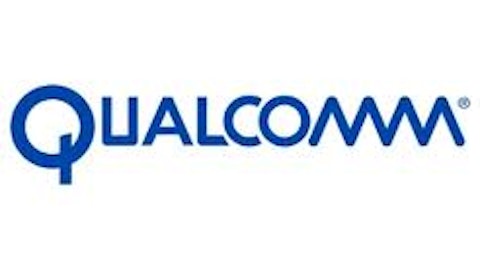As prices of LCD displays have fallen over the past few years Corning Incorporated (NYSE:GLW), a leading supplier of the glass used is such displays, has suffered. Net income began declining in 2011 and continued to decline in 2012, with the EPS for 2012 about half of the EPS for 2010.

Although the company has been diversifying its revenue stream, most of the company’s profits come from its LCD glass business, and profit in this segment has been falling. A morsel of good news came in the fourth quarter of 2012, though, as quarterly EPS adjusted for special items rose year-over-year for the first time in two years.
Corning Incorporated (NYSE:GLW) has done very little in the past year and currently trades for about $13 per share.
With the glimmer of hope that a bottom has been reached in terms of profitability, is Corning a good investment?
A look at earnings
In 2012 Corning Incorporated (NYSE:GLW) recorded revenue of $8 billion, up just 1.5% from 2011, and net income of $1.7 billion, down 38% from 2011. This severe drop in net income was caused mainly by the performance of the display technologies division, which is responsible for LCD glass. Revenue for this division fell 7.5% to $2.9 billion and net income fell 31.8% to $1.6 billion. Almost all of Corning’s profits come from this division, and the declines are clearly not a good sign.
The numbers above would suggest that the margins for this division are extremely high. In fact, this is due to the way in which Corning accounts for its joint ventures. Corning owns 50% of Samsung Corning Precision Materials, 50% of Dow Corning, and varying percentages of a few other companies. The revenue of these companies are not reported on Corning’s income statement, but its share of the net income is. This makes the margins appear quite a bit higher than they actually are. Corning’s share of the total revenue from its joint ventures totaled about $5.3 billion, while its share of the net income, which is already part of the reported net income, was $810 million. So the “effective” revenue for the company was actually $13.3 billion, putting the net income margin at 12.8% instead of 21.2%, as the income statement suggests.
Corning’s other divisions contributed little to the net income. Telecommunications added $155 million on $2.13 billion in revenue, environmental technologies added $115 million on $964 million in revenue, life sciences added $31 million on $657 million in revenue, and specialty materials added $142 million on $1.35 billion in revenue.
Specialty materials contains Gorilla Glass, which is the durable glass used in many smartphones and tablets. Because of Gorilla Glass’s popularity this division has more than doubled its revenue since 2010 and subsequently become profitable. Although much attention is paid to this product, its contribution to profits is still small, albeit quickly growing.
The balance sheet
Corning is sitting on $6.14 billion in cash, compared to $3.46 billion in debt and $930 million in pension obligations. Listed on the balance sheet is also $4.9 billion in investments stemming from joint ventures, but since the income associated with these is counted directly I won’t add this to the cash balance. The net cash is thus $1.76 billion, or $1.17 per share.
Owner earnings
For valuation purposes I like to use owner earnings instead of net income or free cash flow. One issue with Corning is that the net income from the joint ventures is non-cash, meaning Corning isn’t actually receiving that amount. Instead, Corning receives dividends from its joint ventures. In 2012 Corning received $280 million more in dividends than the net income contribution, while in 2011 and 2010 Corning received significantly less than the net income contribution. Since these dividends seem to be fairly variable I’ll simply treat the net income contribution as if it were actual income and ignore the dividends.
Doing this, I arrive at owner earnings of $1.31 billion, or about $0.87 per share.
Valuation
Because the net income associated with display technologies has seen such a rapid decline it’s difficult to predict Corning’s future profitability. After accounting for the cash Corning is trading at 13.6 times owner earnings. The average analyst estimate for 5-year earnings growth is 12%, and if Corning’s profitability has actually bottomed then it could very well be higher. I’ll do a discounted cash flow calculation, but instead of inputing growth rates and determining a value I’ll plug in the current market price and determine how fast owner earnings need to grow to justify that price. I’ll assume that after ten years growth reaches a perpetual value of 3%, and I’ll use a discount rate of 12%.
Corning needs to grow its owner earnings at 5.5% annually over the next 10 years for the stock to be fairly valued today. It seems to me that growth will most likely be faster than this.
The drivers of growth
Corning has grown Gorilla glass into a $1 billion business in a very short time. Gorilla Glass can be found in over one billion devices worldwide, and as smartphones, tablets, and other handheld devices continue to grow in popularity this number should increase dramatically. In 2012 Corning launched a new product called Willow Glass, a flexible glass that is 8% thinner than a dollar bill. This brings the prospect of bendable, flexible displays into the realm of possibility.
Touchscreens are becoming more and more mainstream in laptops, especially since the launch of Windows 8 from Microsoft Corporation (NASDAQ:MSFT). Ultrabooks, a concept created by Intel Corporation (NASDAQ:INTC), are required to have a touchscreen in order to carry the moniker. These ultrabooks run Windows 8, which has an interface that is designed to be navigated by touch. With this comes a need for a durable screen, and Corning’s Gorilla Glass is the perfect solution. Already a handful of ultrabooks contain the product, including the Dell XPS 13 ultrabook and the Lenovo X1.
The release of Windows 8 also allows for tablets to run the same OS run by laptops and desktops, with the Microsoft Surface being the first example. These will all run Intel chips, as opposed to the ARM-based chips found in most tablets today. Both Intel and Microsoft are hell-bent on making headway in the tablet market, so I expect to see a slew of these devices offered in the future.
There seems to be a fair bit of pessimism surrounding “Wintel” as of late. Demand for traditional PC’s is on the decline, and people seem to think Microsoft Corporation (NASDAQ:MSFT) is slowly fading away. But with $64 billion in net cash, or $7.60 per share, and $29 billion in annual free cash flow, or $3.40 per share, a share price around $28 seems crazy. Backing out the cash, Microsoft Corporation (NASDAQ:MSFT) is trading at just 6 times the free cash flow, and the 3.25% dividend yield is just icing on the cake.
Intel’s stock is also depressed, pushing its dividend yield up to 4.25%. This yield is the same as the coupon rate on a bond issued by Intel Corporation (NASDAQ:INTC) maturing in 2042. This fact alone should tell you that Intel may be seriously mis-priced. Intel has boosted capital expenditures over the past two years as it fights for market share in the mobile market, and current profits are depressed because of this. But as more devices ship with Intel inside, I expect the profits to soar and the pessimism to fade.
The bottom line is that the number of devices that use some sort of touchscreen is going to rise over the next decade, and Corning is in a prime position to capitalize on this trend. The road ahead is rough in the short-term, but in the long run Corning should be in good shape.
The article Is There Hope For This Company? originally appeared on Fool.com and is written by Timothy Green.
Copyright © 1995 – 2013 The Motley Fool, LLC. All rights reserved. The Motley Fool has a disclosure policy.





